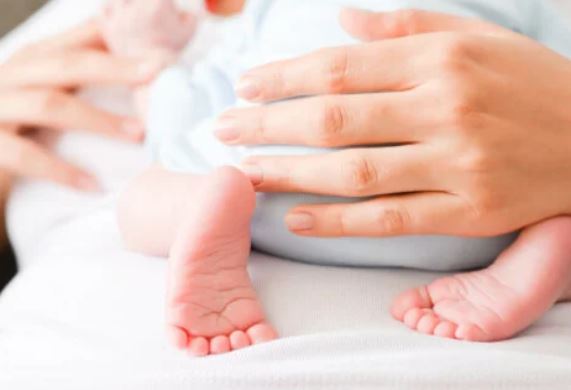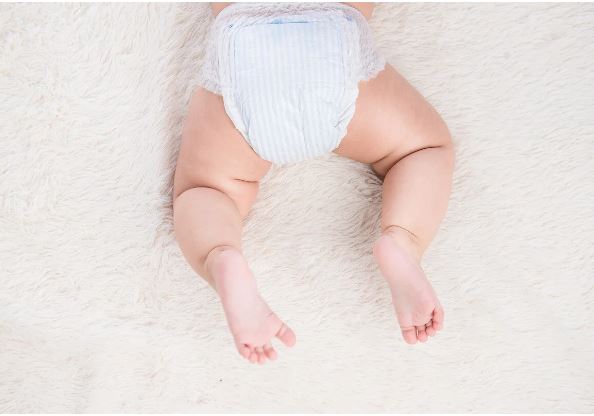Clubfoot is an obvious malformation that, if left untreated, can lead to lifelong limitations and difficulties. However, treatment would usually completely correct the manifestation.

Clubfoot is the most common congenital disorder of all those that affect the legs. It has to do with an abnormality that causes the foot to curve downward and inward. This condition presents different levels of severity.
Clubfoot is also known as clubfoot and some also call it “Talipes.” In most cases, this problem can be corrected with proper treatment, which sometimes involves surgery.
What is clubfoot?

Clubfoot is the most common congenital anomaly affecting the legs.
Clubfoot is a congenital anomaly, that is, it is present at birth. It is recognized because the baby has a crooked foot, usually downward and inward. In this way, the sole of the foot looks back.
In about half of the cases the problem is present in both feet. The anomaly has various degrees: it can range from flexible and mild to rigid and severe. Sometimes the feet look so crooked that they appear to be upside down.
It is common for the clubfoot to also be smaller than normal or a little shorter. Most commonly, the calf muscles of the affected foot are underdeveloped. This abnormality is visible to the naked eye and rarely needs tests to be confirmed.
What Causes Clubfoot?
Science has not specified the reason why clubfoot occurs. In this anomaly, the tendons, which are the tissues that connect the muscles to the bone, are shorter than normal.
It is believed that this condition can be inherited, although not in all cases. However, family history seems to play a role in this malformation.
Likewise, it is known that this anomaly is often part of a genetic syndrome, such as trisomy 18. Positional clubfoot is a different malformation that occurs within the uterus due to the inadequate position of the fetus. However, this is not clubfoot as such and can be easily corrected at birth.
How can clubfoot be treated?
In the past, surgery was almost always the first treatment option. Today, clubfoot is treated with the Ponseti method. This comprises two phases: casting and orthopedic splint.
Plastering phase
Plaster is a bandage hardened with plaster. This is placed one or two weeks after birth. From then on, a weekly consultation is made with the specialist who can be a traumatologist or an orthopedist.
At the weekly visit, the doctor gently moves and stretches the skin. Afterwards, he changes the cast for a new one to gradually turn the clubfoot in the correct direction. Typically, five to seven casts are required before moving on to the next phase.
Orthopedic splint phase
The splint is a rigid device that is used to keep some part of the body in a certain position. In this case, the splint is used to maintain correct clubfoot posture once this has been achieved.
The orthotic splint used is called an “orthosis” and comes with special shoes or boots on each end. Its function is to prevent the foot from taking an incorrect position again, since the growth of the foot involves this risk. It is usually worn for three months and then only during the break for a few years.
Surgery
If the clubfoot is severely deformed or the Ponseti method does not work, surgery is usually required. The abnormality cannot always be corrected with this procedure, and new surgeries may need to be performed throughout life.
Risk factor’s

A family history of clubfoot increases the risk of developing this malformation.
There are several risk factors for clubfoot. The main ones are the following:
Sex. Boys are twice as likely to have this abnormality compared to the number of cases in girls.
Family background. If someone in the family has had clubfoot, it is more likely that this malformation is present at birth.
Congenital diseases. Other congenital skeletal abnormalities make the presence of this malformation more likely.
Smoking mother. Tobacco use during pregnancy increases the baby’s chances of clubfoot.
Insufficient amniotic fluid. If there is little amniotic fluid during pregnancy, the risk of this malformation is higher.
Complications
Clubfoot does not cause much difficulty until the child begins to walk. If the problem is treated in time, the child will most likely be able to walk almost normally. However, in some cases there may be some difficulties such as the following:
Lack of flexibility. The affected foot may be stiffer and cause some limitation in movement.
Shorter leg length. The affected leg may + ç¡’¡ be a little shorter, but without significantly affecting mobility.
Small foot. The most common is that the clubfoot is one size or a size and a half smaller than the other. This creates problems with the footwear.
Calf size. The calf muscles on the affected side are smaller than those on the other side.
When the clubfoot problem is not treated in time, additional complications such as the following may appear:
Dificulty to walk. It is possible that the child cannot walk on the sole of the foot and then does it in an abnormal way: on the ball of the foot, the outer part or even the instep.
Problems generated by the adjustment in the march. Walking incorrectly causes other problems such as sores, calluses, and obstruction in the development of the calf muscles. This creates a strange gait.
Arthritis. There is an increased risk of arthritis.
Low self-esteem. Clubfoot can cause self-esteem problems that tend to increase during adolescence.
Can clubfoot be prevented?
Clubfoot cannot be completely prevented. However, since the mother’s lifestyle can increase the risk of this malformation, it is indicated that during pregnancy the following should be avoided:
The consumption of tobacco.
Spending a long time in environments full of tobacco smoke.
To drink alcohol.
Drugs that are not approved by the doctor.
It is possible to detect this abnormality during pregnancy. Although it cannot be corrected at that time, it is a way to prepare to treat this condition as soon as the child is born.
If clubfoot is suspected, see your doctor
Clubfoot correction may take several years, but it is worth the effort. If this malformation is not treated in time, it could generate a series of physical and emotional problems.
On the other hand, when treatment is assumed and carried out with discipline and perseverance, the safest thing is that the child can walk and run without any problem in the future. It is best to be self-motivated and seek support if necessary.



